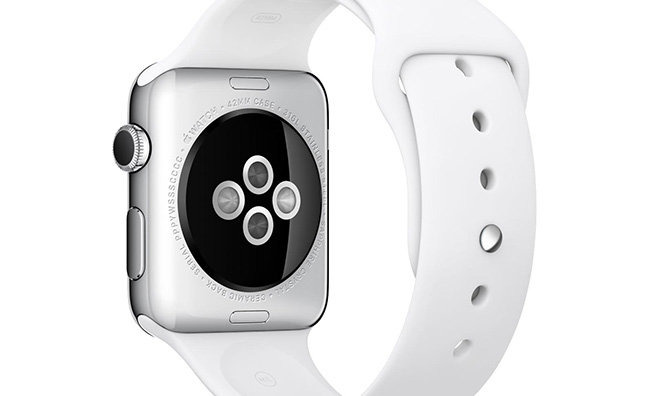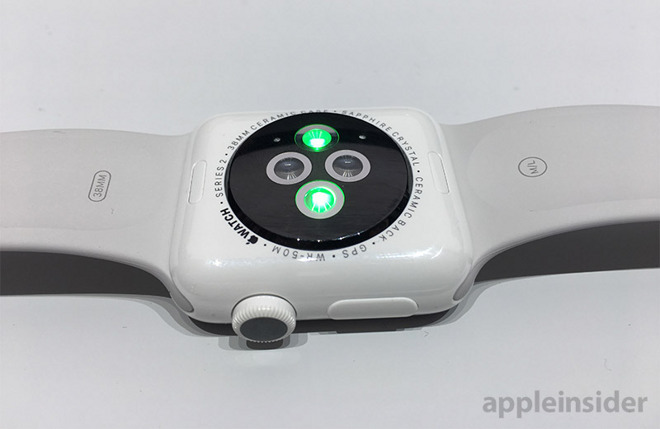An Apple invention published on Thursday reveals work on a next-generation Apple Watch model capable of identifying a user with its heart rate sensor, which if implemented would mark a major step forward in freeing the wearable from iPhone.
As published by the U.S. Patent and Trademark Office, Apple's patent application for a "User identification system based on plethysmography" details a method by which a pulse oximeter is used to determine and identify biometric characteristics of a user's vasculature. Similar in function to Touch ID on iPhone and iPad, the resulting data might then be used to verify a user's identity, thereby allowing access to a previously locked device.
In some embodiments, the pulse oximeter is described in simple terms as two light emitter and light sensor pairs co-located on a mobile device. The system works by emitting light toward a user's skin, blood and other body parts, then measuring how much of that light is absorbed and reflected back to the device. The amount of light collected at each sensor can be calculated to determine the amount of blood present in a user's skin, a benefit for pulse readings.
Light gathered by the two photosensors is measured and in some cases applied to a scatterplot. This data is either compared against previously saved information to positively identify the user or stored for later use.
As with Touch ID, identifying users via vascular biometrics can be a seamless process. In some embodiments, the device monitors onboard motion sensors like accelerometers, gyroscopes and GPS radios to determine user motion. Certain gestures, for example raising the device from waist height to head height, trigger the authentication process.
Once identified, users have full access to device functions. In theory, the system might be applied in place of Touch ID for initial authentication and Apple Pay payments, further reducing Apple Watch's reliance on iPhone.
Apple Watch already uses a two-emitter setup — for accuracy, each of the two sensor setups are tuned to emit and pickup different wavelengths of light — based on plethysmography technology, meaning today's patent could theoretically be applied to existing hardware. Whether vascular variances at the wrist are diverse enough to create a secure biometric system is unclear, though veins in fingers have been used in such applications for years.
Apple's vascular identification patent application was first filed for in May 2016 and credits Daniel J. Culbert as its inventor.
 Mikey Campbell
Mikey Campbell









 Marko Zivkovic
Marko Zivkovic
 Mike Wuerthele
Mike Wuerthele
 Christine McKee
Christine McKee
 Amber Neely
Amber Neely
 Sponsored Content
Sponsored Content
 Wesley Hilliard
Wesley Hilliard

 William Gallagher
William Gallagher









1 Comment